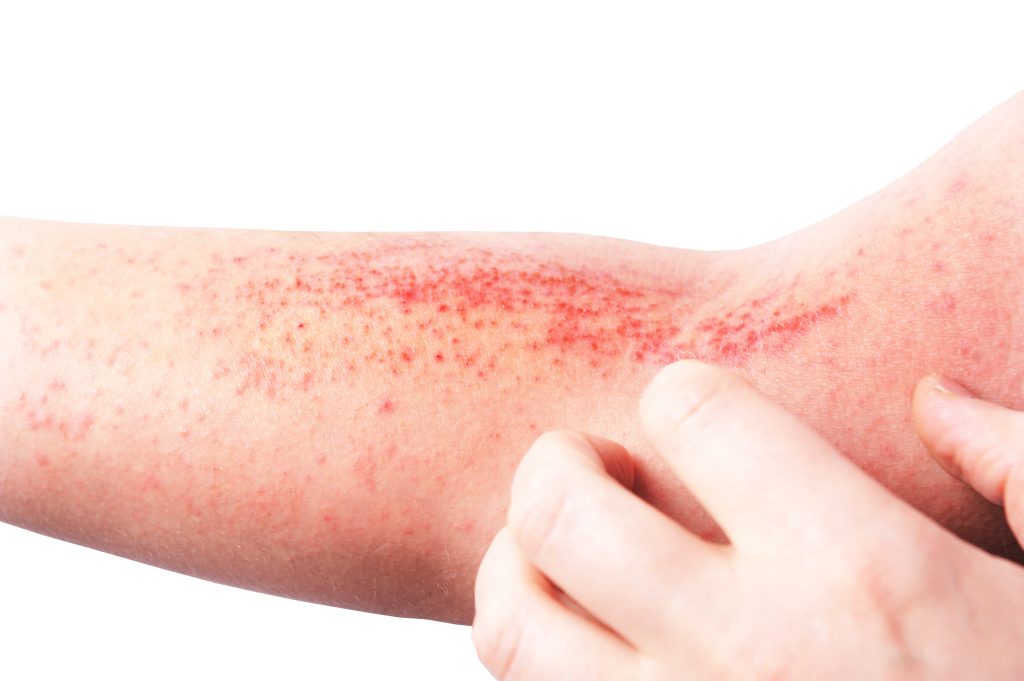Sanofi’s investigational OX40-ligand blocker amlitelimab produces sustained improvement in the signs and symptoms of atopic dermatitis (AD) in adults who previously responded and continued treatment and sustained off-drug improvements in those who stopped treatment.
These are the main findings from part 2 of a phase 2b trial that was presented at the 2024 annual meeting of the American Academy of Dermatology in San Diego, CA.
Amlitelimab is a fully human non-T cell depleting monoclonal antibody that blocks OX40-Ligand and aims to restore the balance between pro-inflammatory and regulatory T cells. It’s being studied in moderate-to-severe AD (phase 3), asthma (phase 2), hidradenitis suppurativa (phase 2), scleroderma, celiac disease, and alopecia (phase 2 studies to be initiated in 2024).
In the phase 2b STREAM-AD study, people with AD who previously responded to amlitelimab and continued treatment showed sustained improvement in signs and symptoms of AD for 28 weeks. Moreover, high responder rates were also observed in participants who were taken off amlitelimab.
The new findings support the quarterly dosing of amlitelimab 250mg with a 500mg loading dose (LD) now being investigated in a larger Phase 3 clinical program (OCEANA).
“Despite available treatment options, not all patients with moderate-to-severe atopic dermatitis respond sufficiently to these treatments, and many continue to suffer from skin lesions and symptoms such as persistent itch, which can have a high impact on their day-to-day lives,” says Professor Stephan Weidinger, MD, PhD, the Director, Professor, Chair of Department of Dermatology and Allergy, University Hospital Schleswig-Holsteinin Kiel and Lübeck, Germany.“Results from this part of the study indicate amlitelimab’s potential for durable off-drug efficacy which supports the evaluation of a less frequent every 12-week dosing. This could offer an important benefit in the treatment of AD patients.”
In the second part of the dose-ranging STREAM-AD study, responders to amlitelimab who achieved a 75% improvement in Eczema Area and Severity Index (EASI-75) score and/or Investigator Global Assessment (IGA) score of 0 or 1 during the 24-week treatment period (Part 1) were re-randomized for an additional 28-week period with continued amlitelimab treatment or amlitelimab withdrawal. Across all dose arms, patients who continued amlitelimab treatment maintained high EASI-75 and/or IGA 0/1, IGA 0/1, and EASI-75 responder rates through 28 weeks. In addition, patients who were taken off treatment showed high responder rates.
Specifically, IGA 0/1 and/or EASI-75 response was maintained in 69.2% of patients who continued treatment with amlitelimab 250 mg every four weeks (Q4W) with 500 mg LD and 58.8% of patients withdrawn from treatment, the study showed.
An analysis including pooled dose arms showed that IGA 0/1 response was maintained in 71.9% of patients with continued treatment vs 57% of patients withdrawn from treatment. In this analysis, EASI-75 response was maintained in 69% of patients with continued treatment vs. 61.6% of patients withdrawn from treatment.
AD-related biomarkers remained reduced at Week 52 in both amlitelimab withdrawn and continuing groups, despite amlitelimab reaching negligible levels in serum.
Reduction of TARC, eosinophils, and IL-22 observed at Week 24 was maintained during withdrawal as well as in patients continuing treatment to Week 52, the study showed. These biomarker data suggest the modulation of inflammatory T cells via the blockade of OX40L and durable control of AD after amlitelimab withdrawal.
The aggregated safety profile of amlitelimab in Part 2 of this study was consistent with that of Part 1, with amlitelimab being well-tolerated, and no new safety concerns were identified during the 28-week maintenance/withdrawal period.


